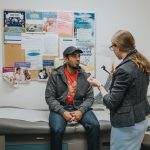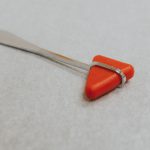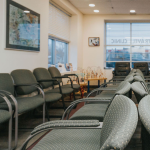Share
Seeing patients after treatment abroad: a clinical experience and lessons learned
Back to MessengerRead time: 1 minute
A middle-aged patient presented to me as a walk-in after returning from a trip abroad. The patient’s articulated concern to me was the need for a follow-up x-ray of the foot. The patient had sustained a fracture of the fifth metatarsal, which was surgically repaired while overseas on holiday. I ordered the x-ray, which turned out to be normal. Since the patient’s family doctor was away, I told the patient they could return as a walk-in for suture removal.
At the second visit, the patient presented with flu-like symptoms, including vomiting and generalized body aches. Examination revealed a tachycardia of 104 bpm, BP of 119/82 mmHg and oxygen saturation of 96% on room air. I did not document a respiratory rate in the medical records but made an entry of “no chest symptoms.” I made an assessment of a viral infection and documented advice to attend “ER if no better.” Unfortunately, the patient suffered a sudden cardiac arrest a few days later. The post-mortem finding was bilateral pulmonary embolism.
A complaint arose as I did not warn the patient of the risks of blood clots. I learned several lessons from this case, which I will take forward with me in my clinical practice. First, when providing follow-up care for patients whose treatment or surgery was done abroad, it is important to remember that standards of practice and post-operative advice may not be the same as in Canada. What I would have told a patient post-operatively may not necessarily be communicated by a physician in another country. It is important not to assume that advice has already been given by another doctor.
Secondly, it is difficult to explain the care provided and prove what was said in a consultation if documentation is not adequate. Simply documenting “ER if no better” is not sufficient. I should have recorded the specific advice I gave to the patient about the circumstances under which they were advised to seek further medical attention. My findings on respiratory examination could also have been better documented. I have attended a medical record keeping course since this occurred, which has been helpful to address this issue.
I hope my learnings, which will help me improve the patient care I provide, will also prove helpful to other physicians in similar situations.
This article was submitted for publication in The Messenger by an Alberta physician as part of a complaint resolution.
Related News
All News & EventsFebruary 10, 2022
Join our team: CPSA senior level position (long-term contract)
February 10, 2022
Common questions about virtual care: FAQs to guide you in your practice
February 10, 2022
Medical Matters: A word from CPSA Deputy Registrar Dr. Susan Ulan
February 10, 2022




















Comments for this post are now closed. If you would like to share your feedback on this topic, please email support@cpsa.ca.